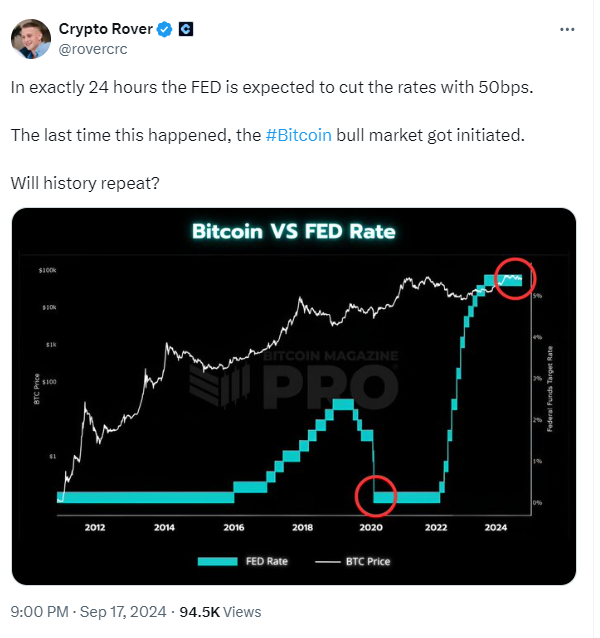The Federal Reserve’s recent decision to cut interest rates marks a pivotal shift in monetary policy, influencing the trajectory of financial markets. With further cuts anticipated, investors are keen to understand how this evolving rate environment might affect stocks, cryptocurrencies, and commodities.
The Federal Reserve’s manipulation of interest rates has historically played a critical role in shaping market trends. During the 2022 tightening cycle, the Fed raised rates to combat inflation, making borrowing more expensive. This resulted in a broad decline in equities, especially in high-growth tech and unprofitable companies. The S&P 500 and Nasdaq Composite saw significant declines, while cryptocurrencies like Bitcoin and Ethereum also suffered.
When rates peaked and began to decline, market sentiment improved. Lower rates make borrowing cheaper, encouraging investment and economic activity. For instance, as rate hikes slowed in 2023, the S&P 500 rebounded by around 24%, while the Nasdaq climbed 43%. Cryptocurrencies mirrored this recovery, with Bitcoin reaching all-time highs as investor confidence returned.

Snap | Source: X (Formely Twitter)
Market Response to Current Rate Cuts
In its latest meeting, the Federal Reserve reduced the federal funds rate by 50 basis points to
However, the market response has been mixed, especially among large tech companies like Apple, Microsoft, and Amazon. While some have bounced back from recent lows, uncertainty about the Fed’s pace of rate cuts continues to drive market volatility. Analysts remain divided on whether the Fed will act swiftly enough to sustain economic growth without further disruptions.
Small-cap stocks, represented by the Russell 2000, have performed well in recent weeks, reflecting optimism around the potential benefits of lower rates. Meanwhile, the
Effects on Cryptocurrencies and Commodities
The cryptocurrency market, heavily impacted by the Fed’s rate hikes, has shown signs of recovery as rates decline. Bitcoin, which suffered during the period of rising rates, has seen a resurgence fueled by increased liquidity and the introduction of spot Bitcoin ETFs. The expectation of continued rate cuts has bolstered market sentiment, with many investors viewing cryptocurrencies as a hedge against the traditional financial system.
Commodities, such as gold and oil, have also reacted to the shifting rate environment. Gold, traditionally viewed as a safe haven, has rallied as investors seek stability amid economic uncertainty. Lower rates reduce the opportunity cost of holding non-yielding assets like gold, driving up demand. Oil prices, while volatile, have stabilized around $70 per barrel, supported by supply constraints from major producers and the broader expectation of a more accommodative monetary policy.
As the Fed continues to lower rates, investors may need to adapt their strategies to navigate the evolving market landscape. Historically, lower rates have favored equities, particularly those in sectors most sensitive to borrowing costs, such as real estate and financials. However, the current economic backdrop suggests that a cautious approach is prudent. Diversifying portfolios to include a mix of equities, commodities, and fixed-income assets can help manage risk.
Long-term investors are often encouraged to stay the course, focusing on high-quality investments that can weather market fluctuations. Market downturns may present opportunities to acquire assets at discounted prices, a strategy favored by many seasoned investors. For traders, the focus remains on closely monitoring economic indicators and adjusting positions as market conditions evolve.
As the Federal Reserve continues to recalibrate its monetary policy, investors should remain vigilant and flexible. The expectation of lower rates brings opportunities, but also challenges, as markets adjust to the new economic reality. By staying informed and maintaining a balanced investment approach, investors can better navigate the uncertainties ahead.
 cryptonews.net
cryptonews.net